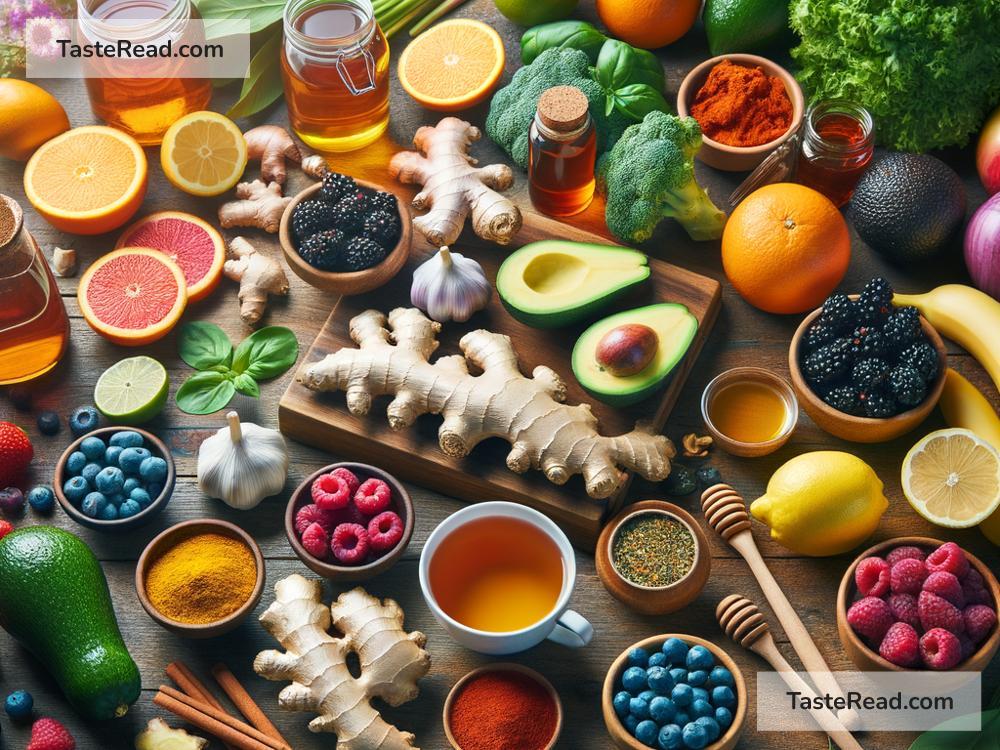Foods for Reducing Bronchoconstriction: Breathing Easier Naturally
Breathing is something we often take for granted, but for people dealing with bronchoconstriction, even simple tasks can feel like a struggle. Bronchoconstriction happens when the airways in the lungs get tight, making it difficult to breathe. This condition is common in people with asthma, chronic obstructive pulmonary disease (COPD), or allergies, and triggers like pollution, cold air, or exercise can make it worse.
Managing bronchoconstriction often involves medications, but did you know that certain foods can help support lung health and reduce the severity of symptoms? While dietary choices alone won’t cure bronchoconstriction, adding specific foods to your diet can help reduce inflammation, improve breathing, and strengthen your body’s defenses. In this article, we’ll explore foods that may help open up your airways and promote easier breathing.
1. Foods Rich in Omega-3 Fatty Acids
Omega-3 fatty acids are healthy fats found in foods like fish (such as salmon, mackerel, and sardines), flaxseeds, walnuts, and chia seeds. These fats are known to fight inflammation in the body, including in the airways. People with asthma or other respiratory conditions often experience airway inflammation, which can worsen bronchoconstriction. Omega-3 fatty acids have been shown to potentially reduce this inflammation and improve lung function over time.
How to include them in your diet:
– Eat baked or grilled fish a couple of times a week.
– Sprinkle flaxseeds or chia seeds over cereals, oatmeal, or smoothies.
2. Fruits High in Vitamin C
Vitamin C plays an important role in protecting your lungs from damage caused by free radicals and reducing inflammation. It can also strengthen your immune system, which is crucial for people with respiratory issues who are more prone to infections. Fruits like oranges, strawberries, kiwis, lemons, and pineapples are rich sources of vitamin C.
Research suggests that regularly eating foods high in vitamin C may decrease the frequency and severity of asthma attacks. Vitamin C can help calm the muscles in the airways, making breathing a little easier.
How to include them in your diet:
– Snack on fresh fruit during the day.
– Make smoothies with a mix of vitamin C-rich fruits.
3. Ginger
Ginger is a popular natural remedy for respiratory issues due to its anti-inflammatory and calming properties. Studies have shown that ginger may help relax the muscles in the airways, reducing bronchoconstriction. This makes breathing easier, especially during an asthma attack or when inflammation in the lungs flares up.
Aside from its respiratory benefits, ginger can also help fight colds and allergies, which often trigger breathing problems.
How to include it in your diet:
– Add fresh ginger to tea or warm water with honey.
– Use grated ginger in soups, stir-fries, or smoothies.
4. Leafy Greens
Leafy greens like spinach, kale, and Swiss chard are rich in magnesium. Magnesium is a mineral that helps relax the muscles in the airways and improve lung function. Studies have shown that people with asthma often have lower magnesium levels, which may worsen bronchoconstriction.
Additionally, leafy greens contain antioxidants that fight inflammation and promote overall lung health.
How to include them in your diet:
– Make salads with spinach, kale, or other greens.
– Blend leafy greens into smoothies or add them to soups.
5. Turmeric
Turmeric contains an active compound called curcumin, which has strong anti-inflammatory properties. Like ginger, turmeric is known to help calm inflammation in the airways, potentially reducing the tightness that comes with bronchoconstriction. It may also boost immune health and protect your lungs from damage caused by environmental triggers like pollution or smoking.
How to include it in your diet:
– Stir turmeric into warm milk (golden milk) or tea.
– Add turmeric to curries, rice dishes, or roasted vegetables.
6. Garlic and Onions
Garlic and onions are rich in compounds that help reduce inflammation and clear mucus from the airways. These foods also contain allicin, a natural chemical that has antibacterial and antiviral properties. Many times, bronchoconstriction is worsened by infections, so eating garlic and onions can support your respiratory health and immune system.
How to include them in your diet:
– Cook garlic and onions into soups, stews, or stir-fries.
– Use raw garlic in salad dressings or dips like hummus.
7. Apples
Apples contain antioxidants and flavonoids that may help improve lung function and reduce the risk of asthma attacks. Eating apples regularly is linked to healthier lungs in general. Flavonoids in apples help calm inflammation in the airways, which can ease breathing and reduce bronchoconstriction.
How to include them in your diet:
– Slice apples for a quick snack.
– Add them to oatmeal or salads.
8. Green Tea
Green tea contains antioxidants that help reduce inflammation and soothe the muscles in the lungs. It also has compounds that may reduce allergic reactions, which often lead to airway constriction. Drinking green tea regularly might improve overall lung health and reduce symptoms of bronchoconstriction.
How to include it in your diet:
– Drink a cup or two of green tea daily.
Final Thoughts
While foods alone can’t completely solve bronchoconstriction, incorporating anti-inflammatory, nutrient-rich foods into your diet can make a big difference in your overall lung health. Omega-3 fatty acids, vitamin C-rich fruits, ginger, turmeric, leafy greens, and other foods mentioned above may help reduce inflammation, support immune function, and relax airways.
If you’re dealing with respiratory issues, it’s always important to work closely with your doctor and follow their recommendations. Try combining a healthy diet with your prescribed treatments for better results, and enjoy breathing a little easier with the help of these natural remedies.


